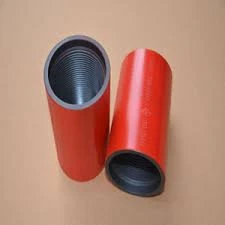- Afrikaans
- Albanian
- Amharic
- Arabic
- Armenian
- Azerbaijani
- Basque
- Belarusian
- Bengali
- Bosnian
- Bulgarian
- Catalan
- Cebuano
- Corsican
- Croatian
- Czech
- Danish
- Dutch
- English
- Esperanto
- Estonian
- Finnish
- French
- Frisian
- Galician
- Georgian
- German
- Greek
- Gujarati
- Haitian Creole
- hausa
- hawaiian
- Hebrew
- Hindi
- Miao
- Hungarian
- Icelandic
- igbo
- Indonesian
- irish
- Italian
- Japanese
- Javanese
- Kannada
- kazakh
- Khmer
- Rwandese
- Korean
- Kurdish
- Kyrgyz
- Lao
- Latin
- Latvian
- Lithuanian
- Luxembourgish
- Macedonian
- Malgashi
- Malay
- Malayalam
- Maltese
- Maori
- Marathi
- Mongolian
- Myanmar
- Nepali
- Norwegian
- Norwegian
- Occitan
- Pashto
- Persian
- Polish
- Portuguese
- Punjabi
- Romanian
- Russian
- Samoan
- Scottish Gaelic
- Serbian
- Sesotho
- Shona
- Sindhi
- Sinhala
- Slovak
- Slovenian
- Somali
- Spanish
- Sundanese
- Swahili
- Swedish
- Tagalog
- Tajik
- Tamil
- Tatar
- Telugu
- Thai
- Turkish
- Turkmen
- Ukrainian
- Urdu
- Uighur
- Uzbek
- Vietnamese
- Welsh
- Bantu
- Yiddish
- Yoruba
- Zulu
Understanding the Types and Functions of Casing and Tubing Connections in Oil Extraction
Casing and Tubing Connections An Overview
Casing and tubing are essential components in the oil and gas industry, playing critical roles in the drilling and production processes. Proper connections between these elements are vital for ensuring well integrity, safety, and efficiency. This article will provide an overview of the types of casing and tubing connections, their applications, and the importance of selecting the right connection type for specific drilling conditions.
Types of Casing and Tubing Connections
Casing is the structural element that forms the walls of a wellbore, providing support and protecting the well from external pressures and collapse. Tubing, on the other hand, is used to transport hydrocarbons from the reservoir to the surface. The connections between these two components can broadly be categorized into a few types threaded connections, welded connections, and slip connections.
1. Threaded Connections This is the most common type of connection used in casing and tubing. Threaded connections consist of male and female threads which are designed to interlock. They can be of various designs, such as API (American Petroleum Institute) threads, which provide good sealing capabilities. Advanced threaded connection technologies, such as premium connections, offer enhanced strength, sealing, and fatigue resistance, catering specifically to high-pressure and high-temperature environments.
2. Welded Connections In applications where higher strength and durability are required, welded connections are often favored. This type involves joining casing or tubing segments using welding processes, offering a continuous metal bond. Although welded connections provide excellent integrity, they can be more challenging to inspect and repair compared to threaded connections.
3. Slip Connections Slip connections are used primarily in completion operations, allowing for adjustments in length without compromising the structural integrity of the well. These connections enable easier installation and maintenance but may require specific design considerations to ensure proper sealing and load distribution.
Applications and Importance
The choice of casing and tubing connections greatly influences the performance and safety of drilling operations
. Each type of connection serves specific purposes and is selected based on anticipated well conditions, including pressure, temperature, and the nature of the geological formations being drilled.casing and tubing connections

- Pressure Considerations In high-pressure environments, premium threaded connections are often chosen due to their superior sealing capabilities and resistance to leakage. Conversely, in lower-pressure applications, standard API connections might suffice.
- Corrosive Environments Certain wells may be exposed to corrosive substances, necessitating the use of specialized materials and connection types. In such scenarios, the selection of corrosion-resistant alloys and appropriate sealing methods is crucial to extend the lifespan of casing and tubing.
- Cost Efficiency While premium connections may offer enhanced performance, they also come at a higher initial cost. Operators must weigh the long-term benefits against upfront expenses when making selections.
Ensuring Integrity and Safety
Proper installation and maintenance of casing and tubing connections are paramount to ensuring well integrity and safety throughout the life of the well. Regular inspection methods, including non-destructive testing (NDT) and pressure testing, help identify potential issues before they lead to catastrophic failures.
Moreover, advancements in technology, such as the use of advanced materials and automated installation techniques, continue to improve the reliability of casing and tubing connections. As the industry moves toward more complex and deeper wells, the need for innovative connection solutions will only grow.
Conclusion
In summary, casing and tubing connections are crucial components in the oil and gas industry that directly affect well performance, safety, and durability. Understanding the various connection types and their applications allows operators to make informed selections that optimize operations in diverse drilling environments. As technology advances, the focus on robust and reliable connections remains central to achieving operational excellence and sustainability in resource extraction. As challenges grow in complexity, so too will the need for smarter, more efficient connection techniques that can withstand the pressures of modern oil and gas production.
-
Tubing Pup Joints: Essential Components for Oil and Gas OperationsNewsJul.10,2025
-
Pup Joints: Essential Components for Reliable Drilling OperationsNewsJul.10,2025
-
Pipe Couplings: Connecting Your World EfficientlyNewsJul.10,2025
-
Mastering Oilfield Operations with Quality Tubing and CasingNewsJul.10,2025
-
High-Quality Casing Couplings for Every NeedNewsJul.10,2025
-
Boost Your Drilling Efficiency with Premium Crossover Tools & Seating NipplesNewsJul.10,2025







